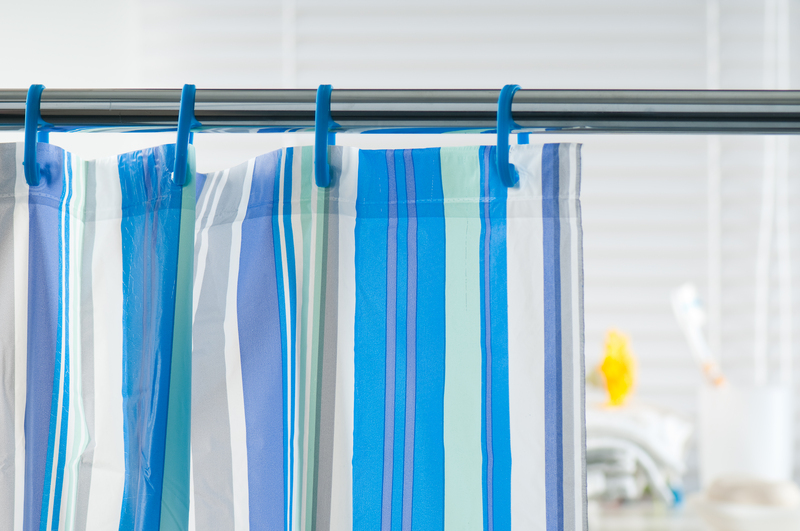Maintaining Minimalism: Tips for After a Major Declutter
You've conquered the clutter, overhauled your home, and experienced the calm of minimalist serenity. But what comes next? For many, maintaining minimalism after a big declutter can be more challenging than the initial purge. If you want to enjoy your newfound space and simplicity long-term, it's crucial to adopt sustainable routines and a minimalist mindset. This comprehensive guide will provide practical tips for maintaining minimalism, ensuring your home (and life) remain uncluttered.
Why Maintaining Minimalism Matters
Your decluttering journey doesn't end the moment you drop off donation boxes. Maintaining minimalism is about creating lasting habits and environments that reflect your values. Here's why sustaining your minimalist lifestyle is so important:
- Lasting Peace of Mind: A clutter-free space reduces stress and boosts mental clarity.
- Greater Efficiency: Fewer possessions mean less to clean and maintain, freeing up your time.
- Sustainable Living: Consuming less means a lighter footprint on the environment.
- Financial Control: Minimalism encourages thoughtful purchases and savings.
- Personal Growth: Minimalism allows you to focus on experiences and relationships, not things.

Setting the Stage: Mindset and Motivation
Understand Your "Why"
To maintain a minimalist home after major decluttering, revisit why you started. Did you want less stress? More time? Increased productivity? Write down your motivations, and refer to them whenever you feel the urge to accumulate "just in case" items. Keeping your purpose front-and-center empowers you to stay committed.
Cultivate Gratitude
Gratitude for what you already own is central to living minimally. Regularly take stock of your possessions and reflect on how they serve you. This awareness helps reduce unnecessary acquisitions.
Establishing Minimalist Routines
Daily Maintenance Habits
- Tidy as You Go: Put items back immediately after use. This prevents small messes from becoming overwhelming clutter.
- End-of-Day Reset: Spend 5-10 minutes at the end of each day resetting your space. Return out-of-place objects, do the dishes, or wipe down surfaces. Consistency is the secret to ongoing order.
- Fresh Eyes: Occasionally, pretend you're seeing your home for the first time. What would stand out as clutter?
The "One In, One Out" Rule
This classic minimalist strategy means every time you acquire something new, let go of something else. For example, buy a new shirt? Donate or recycle one old shirt. This prevents gradual build-up and supports continuous minimalism.
Regular Decluttering Sessions
- Monthly Quick Checks: Schedule a monthly "scan" of each room. Ask yourself: Have I used this in the past month? If not, consider letting it go.
- Seasonal Purges: Change of season is an ideal time to reassess clothes, decor, sports equipment and more.
Building Boundaries with New Acquisitions
Shop with Intention
When considering any purchase, pause and ask yourself:
- Do I genuinely need this?
- Will it truly add value or joy?
- Can I borrow, rent, or repurpose something I already have?
Adopt the habit of waiting at least 24 hours before making non-essential purchases. This reduces impulse buys and helps you maintain minimalism after a declutter.
Be Wary of "Free" Items
It's tempting to accept freebies - samples, gifts, hand-me-downs - but these can sneak clutter back into your life. Accept only what you truly want or need.
Embrace Digital Minimalism
Clutter isn't only physical. Limit digital distractions by:
- Unsubscribing from promotional emails
- Organizing your files and photos
- Deleting unused apps
Declutter Hotspots: Key Areas to Monitor
Some zones attract clutter more than others. Keep these areas in check to effortlessly maintain a decluttered home:
- Entryway: Shoes, bags, coats, and mail pile up quickly. Use dedicated baskets or hooks, and process mail immediately.
- Closets: Before buying new clothes, try a "clothing fast" - wear what you have for a set period.
- Kitchen Counters: Clear these daily, storing appliances out of sight if unused.
- Drawers and Junk Spaces: Assign a purpose to every drawer. Empty, clean, and re-evaluate these spaces monthly.
Minimalism in Daily Life: Beyond the Home
Mindful Scheduling
Apply minimalist principles to your calendar. Avoid overcommitting. Prioritize activities and relationships that bring joy or fulfillment. Say 'no' when something doesn't align with your minimalist values.
Minimalist Social Life
Instead of possessions, focus on making memories. Organize potlucks, walks, or simple gatherings that don't require lots of "stuff." You'll forge deeper connections and avoid filling your home with unnecessary party supplies or decorations.
Family-Friendly Minimalism: Getting Everyone On Board
Set the Example
Demonstrate the benefits of a minimalist lifestyle to your partner, kids, or roommates. When they see how much easier and more enjoyable life is, they'll be motivated to participate.
Involve Everyone
Assign decluttering tasks and empower all family members to manage their own belongings. Create family routines for tidying and purging, and celebrate each milestone together.
Toy and Supply Management
- Rotate toys: Keep a small selection visible and store the rest. Swap them often to refresh interest.
- Limit creative supplies: Regularly check for dried out markers, broken crayons, or extra notebooks and recycle as needed.
Celebrating Milestones and Staying Inspired
Reflect on Your Progress
Minimalism is a journey, not a destination. Every so often, review before-and-after photos, jot down what has improved in your life, or share your story with others. This positive reinforcement can keep you engaged and motivated.
Seek Ongoing Inspiration
- Follow minimalist blogs, podcasts, and social media accounts for fresh ideas and encouragement.
- Read books about intentional living and simplicity.
- Connect with others pursuing minimalism - online or at local meetups.
Minimalism for Different Spaces and Lifestyles
Minimalist Small Spaces
Maintaining minimalism is especially beneficial for those living in apartments or tiny homes. Opt for multi-purpose furniture, use vertical storage, and value quality over quantity.
Minimalism for Families
Emphasize experiences over things. Teach children the value of sharing, donating, and being satisfied with less. Use checklists and labels to keep shared spaces organized.
Minimalism for Busy Professionals
Streamline your wardrobe (think capsule collection), digitize documents and notes, and simplify your workspace to maximize productivity with minimal effort.
Common Challenges -- and How to Overcome Them
- Guilt Over Letting Go: Remind yourself that donating items gives them a new life with someone who needs them. Take baby steps -- it gets easier.
- Backsliding Into Old Habits: Life happens! If you notice clutter creeping back, revisit your why and reset with a mini-declutter challenge.
- Sentimental Attachments: Keep only the items with the most meaning. Photograph or journal about things you're ready to release.
- Lack of Support from Others: Focus on managing your own possessions and lead by example. Over time, others may follow suit.

Advanced Minimalist Tips to Sustain Your Progress
- Curate, Don't Accumulate: Choose to collect only what truly inspires and delights you -- like artwork or books, not pointless gadgets.
- Choose Quality Over Quantity: Invest in well-made essentials that last rather than frequent replacements.
- Regular Mindset Check-ins: Minimalism is about re-evaluating your needs and desires. Set reminders to check-in with your values.
- Share the Minimalism Message: Teaching what you've learned keeps you focused and helps others discover the freedom of less.
Conclusion: Enjoy the Serenity of Ongoing Minimalism
Maintaining minimalism after decluttering is a continual process of mindful decisions, healthy habits, and clarity about what matters most. As you integrate these minimalist lifestyle tips into your daily routine, you'll find that less truly is more -- more time, more freedom, more peace of mind.
Remember: Minimalism is not about deprivation; it's about making space for what matters. Stay consistent, seek inspiration, and embrace the journey. From the very first declutter to a lifetime of simplicity, every step you take is an investment in your well-being.
Ready to Maintain Your Minimalist Lifestyle?
Start today by choosing one area to reset, reviewing your motivations, or setting a new habit in motion. Minimalism is a gift you give yourself again and again -- enjoy it every day!
```